Laundry Care Symbols: The Ultimate Guide to Keeping Your Clothes Looking New for Longer

When it comes to doing laundry, we’d all like to think we know best. Whether it is separating darks from lights, picking out top-rated detergents, or carefully choosing a wash temperature, we all hope our favorite outfits come out looking fresh. But, the truth is, many of us don’t have the laundry instincts we think we do--and that’s okay!
Fortunately, clothing manufacturers are on our side when it comes to extending the lifespan of our favorite garments. Whether it’s symbols on how to wash, dry, iron, or even bleach, manufacturers often try and help to ensure our clothing stays in the same condition we bought it in. However, if you're like us, trying to learn exactly what each symbol means can be quite overwhelming and even a bit confusing. What are all those circles, triangles, and squares--and why are they so important?
The truth is, following these symbols proves to be a lot more effective at preserving the color, sizing, and overall appearance of our clothes than simply guessing. Many fabrics require that we follow specific care instructions to prevent unwanted effects such as shrinking, fading, pilling, or even a loss of softness. And, when done right, your clothes can stay looking new for longer!
Believe it or not, learning all the care symbols doesn’t have to be quite as hard as learning a new language. By understanding the core symbols and a few secondary variations, we can all be better equipped to care for our favorite outfits. Below we have outlined the five basic symbols and their common variations to help you take the guesswork out of laundry!
Washing
When referring to the care symbols on each tag, manufacturers make our job even easier by organizing the symbols in the same order every time. From the left, the first symbol we encounter refers to washing instructions and is denoted by a washtub icon with a curved line near the top to denote water. These symbols help to guide us through every step of the washing process indicating whether or not the garment is machine washable, the temperature to wash it in, and even the ideal cycle. Here’s what to look for:
Is it machine washable?: One of the most important care tips to follow is to avoid machine washing garments that are not deemed safe for washers. Fortunately, these symbols are not too complicated to learn. Garments that are not intended for machine washing are labeled with a basic washtub icon covered by a large “X”. Alternatively, when garments that can’t be machine washed are safe to be washed by hand, you will see a washtub icon with a hand inside.
Temperature: Within the washtub symbol, there are two common systems used to express what temperature to wash the garment in--dots or numbers. When a number is placed within the washtub icon, this represents the highest temperature you should wash the item at. Ideally, any piece of clothing with a label consisting of a washtub icon with the number 30 in Celsius (or 86 in Fahrenheit), should be washed at or below that temperature to ensure the garment retains its original color. Similarly, the dots system works the same way to indicate wash temperatures. The more dots located within the washtub icon, the higher the temperature you should use to wash it. Cold temperatures are represented by just one dot, warm by two, and hot by 3 or more.
Cycle: To signify that the garment needs to be washed on a specific cycle, manufacturers often use straight lines located just below the washtub icon. If there is no line, it is safe to wash the garment on a normal cycle. However, keep an eye out for one line, meaning permanent press, or two, meaning a gentle cycle to ensure your clothes come out looking like new.
Bleaching
The next symbol which appears directly to the right of the washing symbols on each tag tells you everything you need to know about your options when it comes to bleaching your garment. These symbols take the basic shape of triangles.
Bleach Safe: Tags with a plain triangle icon indicate that the item of clothing is safe to be bleached. However, watch out for triangles with two lines near one corner which signal to only use a specific type of bleach (such as chlorine-free or oxygen).
Avoid Bleach: Similar to the icon representing garments that are not machine washable, triangles with the same “X” indicate that it is not safe to use any kind of bleach.

Drying
Next up on the tag of your clothing items would be any icons symbolizing precautions to take in the drying process. These icons take the basic shape of a square and follow many of the same patterns uncovered in the washing process.
Is it dryer safe?: Garments that are dryer safe are indicated by a square enclosing a slightly smaller circle. They follow the same basic dot system used in the washing process with increasing dots representing higher levels. In this case, one dot indicates to tumble dry on low, two dots suggests to tumble dry normally, and finally three dots means you can tumble dry on high.
Cycle: Just like the horizontal lines placed directly below the wash symbols, the same lines can be used to symbolize the drying cycle needed to protect your garment in the dryer. Again, one line suggests using a permanent press cycle, while two lines suggests using a gentle cycle.
Alternative drying instructions: Garments that are not intended to be tumble dried in a machine will be denoted by the basic square with a circle inside which is then crossed out by an “X”. The recommended drying options will then be suggested using alternative variations on the basic square shape. Two lines in the top corner indicate to dry the garment in the shade, while a curved line inside the top of the square indicates to line dry the item. Various lines can also be used to suggest drying the garment flat (one horizontal line) or drip drying the item (three vertical lines).
Check out all of our drying rack solutions HERE to help keep your garments looking newer longer!

Ironing
Unfortunately, the laundry process isn’t quite over even when your clothes are all dry. A lot of the time, our clothes need some additional care to take out the wrinkles that often appear during the drying phase. In these cases, it is important to follow the next symbol located on your garments tag which indicate proper ironing instructions. These icons take a shape resembling a hot iron with a handle at the top.
Temperature: Once again, the dot system can be used to help indicate the maximum temperature we should use to iron our garment. One dot suggests using a cool iron, two dots suggests warm and three dots suggests a hot iron is safe to use.
Steam vs Iron: Depending on the clothing item and the type of fabric it is made out of, some manufacturers may recommend to avoid using an iron (indicated by the iron crossed out by an “X”) and instead use a steamer as needed. In this case, you will see the same traditional iron symbol with three diagonal lines located below.
Shop all of our ironing solutions HERE.

Dry Cleaning
The last set of icons to look out for are the plain circles indicating that your garment needs to be dry cleaned (or not). These symbols are the most basic with a plain circle suggesting that the clothing item should be dry cleaned or a circle with an “X” over it indicating that your garment should not be dry cleaned.





